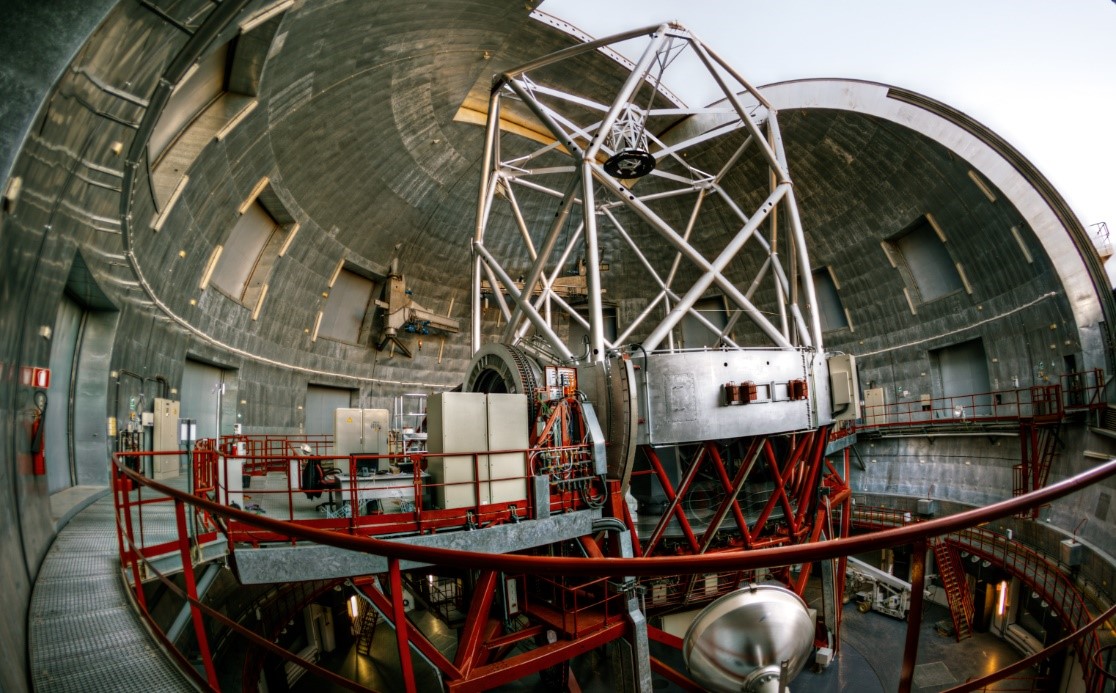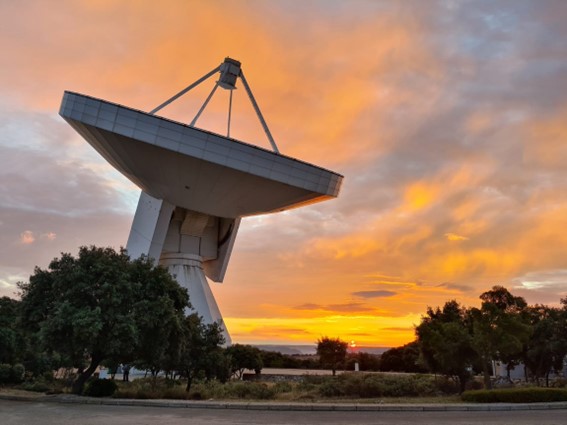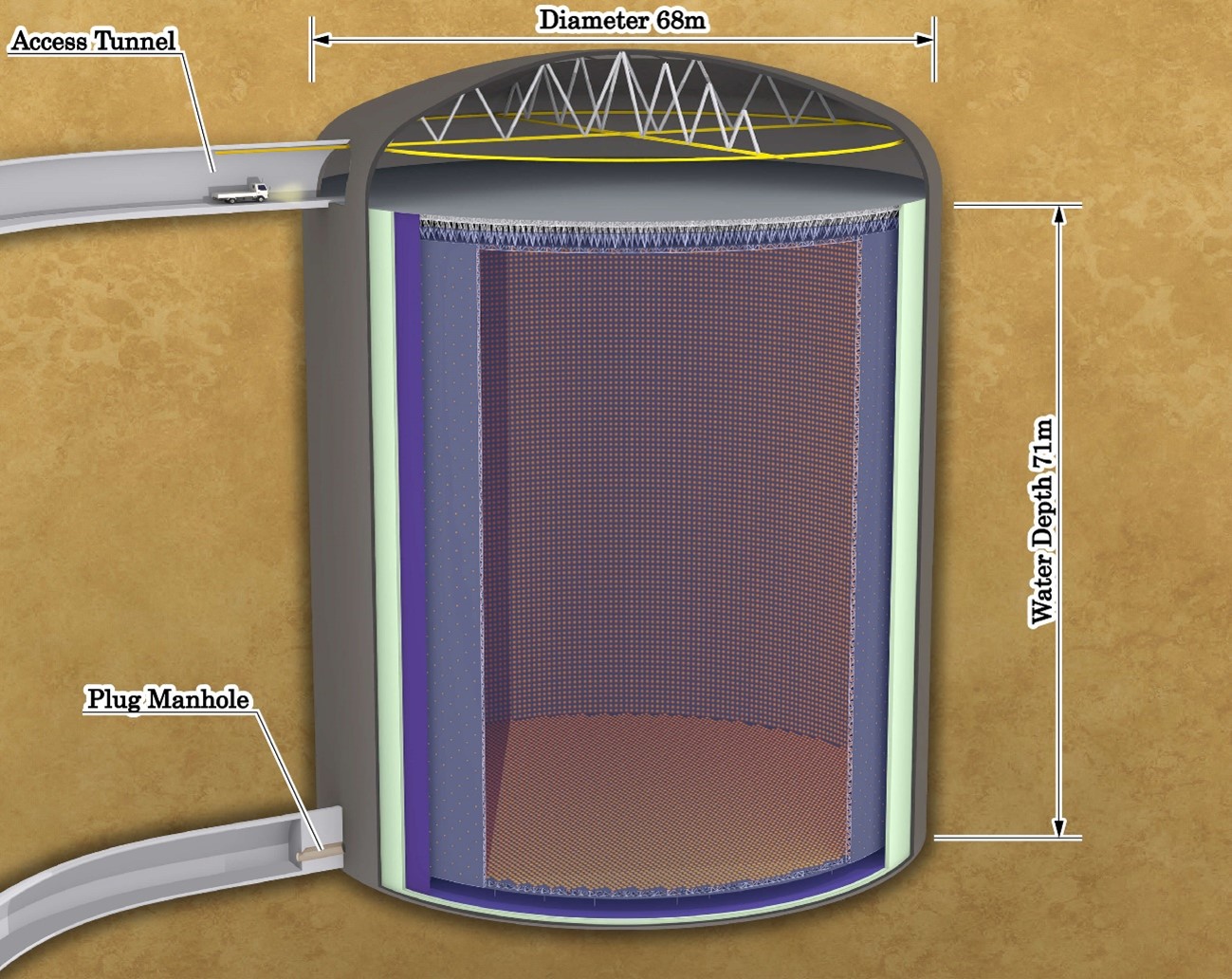The CDTI Innovation is working with ICTS of astronomy and astrophysics in the dissemination of projects for the spanish science
Spain took a leading role within the developed countries in research in astronomy and astrophysics. According to spanish society of astronomy, there were 14 centres of research in astronomy and astrophysics and more than 30 universities research groups with scientific production in the area. Between institutions, emphasize the Instituto de astrofísica de Canarias and the institute of Astrophysics Andalusia – CSIC, both accredited as “ Centre of excellence Severo Ochoa 'by the State investigation agency

TheScientific and technical facilities Unique (ICTS)now in the area of astronomy and astrophysics are available to the research community to carry out its observations and work in network within theInfrastructure network Astronomy. This network was created in the year 2007 in order to advise the General Administration Centre of excellence Severo Ochoa in ICTS in astronomy and provide a forum to promote coordination between them. Moreover, theCanfranc Underground Lab, devoted to research of neutrinos, also is framed in the area of astronomy and astrophysics.
During the coming years, the national network of ICTS will make major investments in updating, development of scientific instrumentation and new services by offering opportunities for his marvellous industry spanish science. These investments are reflected in the strategic plan for ICTS and are valued at approximately eur 300 million for the period, with 2021-2027financing of the mechanism of recovery and resilience and ERDF funds.
In this article summarizes the main opportunities in ICTS astronomy and astrophysics, set out in detail in the followinglink.
Opportunities for the infrastructure network Astronomy
The ICTS belonging to the infrastructure network of Astronomy (RIA) are theHispanic Astronomical centre in Andalusia (CAHA),Great canary telescope (GTC),Astronomical observatory of Javalambre (LSO),Canary observatories (OCAN),Yebes observatory (OY)andInstitute of Line Radio Astronomy (IRAM).
Within the strategic plan CAHA (2021-2025) the construction and commissioning of a new instrument in the telescope of 3.5 m called TARSHISH apart from the development ofMARCOT projecta telescope, based on the integration of multiple telescopes opening under the age of 50 cm at the same cell, but to operate as a telescope of opening a cost equivalent to an order of magnitude lower.
Great canary telescope
The great canary telescope has a project to improve their infrastructure which will include the replacement of the gates of ventilation of the dome, various actions, improvements in cranes and mechanical adjustments of the guides of openness and implementing a system of monitoring, in addition to the creation of a new management process of segments of the primary mirror as well as the improvement of systems of electrical and lighting. The end of the decade is expected to develop new instruments, improving various optomecánicos elements of the telescope and consolidate its digital transformation, as well as to incorporate new systems of maintenance, cleaning of mirrors and obsolescence of the system.
Interior view of the great canary telescope (Credit: Great canary telescope)

Astronomical observatory of Javalambre
The astronomical observatory of Javalambre aims to reduce their carbon footprint in the form of a new solar energy plant in the environment of the observatory will be built, in addition to a new residence and will install a powerhouse of liquid nitrogen and gas. It was also boarding the development of a small bell vacuum for the preparationin situof the strands necessary for the aluminised mirror. Once under way and mapped J-PLUS J-PAS, will embark on a long-term project of instrumentation development second-generationJAST80andJST250.
With regard to the canary Observatories, highlights the opportunities of the projects:Cherenkov Telescope Array,European Solar Telescope,New Robotic Telescopesthat will offer many opportunities ranging from civil works and design and installation of domes, to provision of equipment and electronics. On the other hand,Small Exo Life Finderhas an electromechanical investment and monitoring systems, the experimentQUIJOTEin the construction of a criostato with benefits for work in a vacuum and high temperatures below the 300mK ATLAS and the acquisition and installation 4 modules.
Yebes observatory
For its part, the observatory of Yebes, aims to conduct a study of thermal gradients in the radio telescope of 40 m and taking action to reduce them. In addition, it will work together with industry to improve the protection of the panels reflectors and build two heterodinos radioastronómicos cryogens (230 GHz and 4-40 GHz).
Radiotelescopio de 40 m del Observatorio de Yebes (Crédito: Instituto Geográfico Nacional)

The institute of Radio Astronomy Line
Finally, the IRAM is implementing its strategic plan for improvement of facilities: positioning system, improvement of the surface of the main mirror and acquisition of recipients of 1.3 mm and 3 mm. There are also planned multiple proceedings including the installation of a new, updated sub-eflector cameras NIKA2 and continuous improvement of software.
New projects led by the Underground Lab Canfranc
TheCanfranc Underground Labis currently leading the spanish participation in the design and construction of Hyper-Kamiokande (HKK), an international project that aims at building a neutrino detector of third generation with a volume of more than 250 cubic metres. The spanish research groups participating in the HKK provide critical elements of the same as the capsules of protection of the sensor foto-multiplicadores internal system of compensation geo-magnética or provision of fresh air of radon in any underground infrastructure for the LSC, HKK is short-term opportunities in production and mechanization of steel anti-implosión covered protective labour, civil engineering, infrastructure, electrical and electronic systems.
Recreation of Hyper-Kamiokande (Credit: University of Tokyo)

Furthermore, this year will start the design phase of NEXT-HD that will require the production of a tank of Xenon gas at high pressure for extraction fibre and a system of separation of noble gases.
The CDTI and industry of science
The government of Spain, through theMinistry of science, innovation and universities, managing and promotes the spanish participation in the major Scientific Facilities. Furthermore, this Ministry has entrustedCDTI Innovationthe work to maximize the return of technology and industrial property derived from the spanish contribution to the great Scientific Facilities (GICs) and to advocate that contracts executed in these infrastructures are very important and possible technical excellence.
In the most relevant infrastructure, the CDTI innovation has been designated as the ILO (Industrial Liaison Officer) or point of contact between the united nations and the spanish companies interested in participating in tenders. Since the CDTI the tender which offer these institutions, thematic events are organized, helps in the formation of consortia, advising companies in the submission of tenders and monitoring of contracts awarded to national entities.
Moreover, the CDTI Innovation collaborates with the ministry of science, innovation and universities in the promotion of partnerships between industry of science and ICTS, to promote the development of the industry as a supplier, the use of facilities by the technology transfer and industry.
To give visibility to the domestic industry, the CDTI, regularly publishes acatalogue of industrial capacities for big Science Facilitiesthat, in its latest edition of 2022, reflects the capacities of more than100 spanish companiesvery experienced in providing supplies in the fields of particle physics, merger and astronomy.
CDTIInnovation
The CDTI Innovation is the agency for financing innovation of the ministry of science, innovation and universities that promotes innovation and technological development of spanish companies, channeling requests for funding and support for r & D & I projects of spanish entities at the state and international levels. We Contribute to the improvement of the technological level of spanish companies and drive and, with an international network with coverage of 51 countries support the spanish participation in international programmes for technology cooperation and the international transfer of technology. The CDTI also supports the creation and consolidation of technology-based enterprises in Spain.
The centre for technological development and innovation, E.P.E. (CDTI) is a public entity under the ministry of Science, innovation and universities.
Further information,:
Office of the press
prensa@cdti.es
91-581.55.00
On The Internet
Website:www.cdti.es
In Linkedin:https :// www.linkedin.com/company/29815
X:https :// twitter.com/CDTI _ innovation
On Youtube:https :// www.youtube.com/user/CDTIoficial